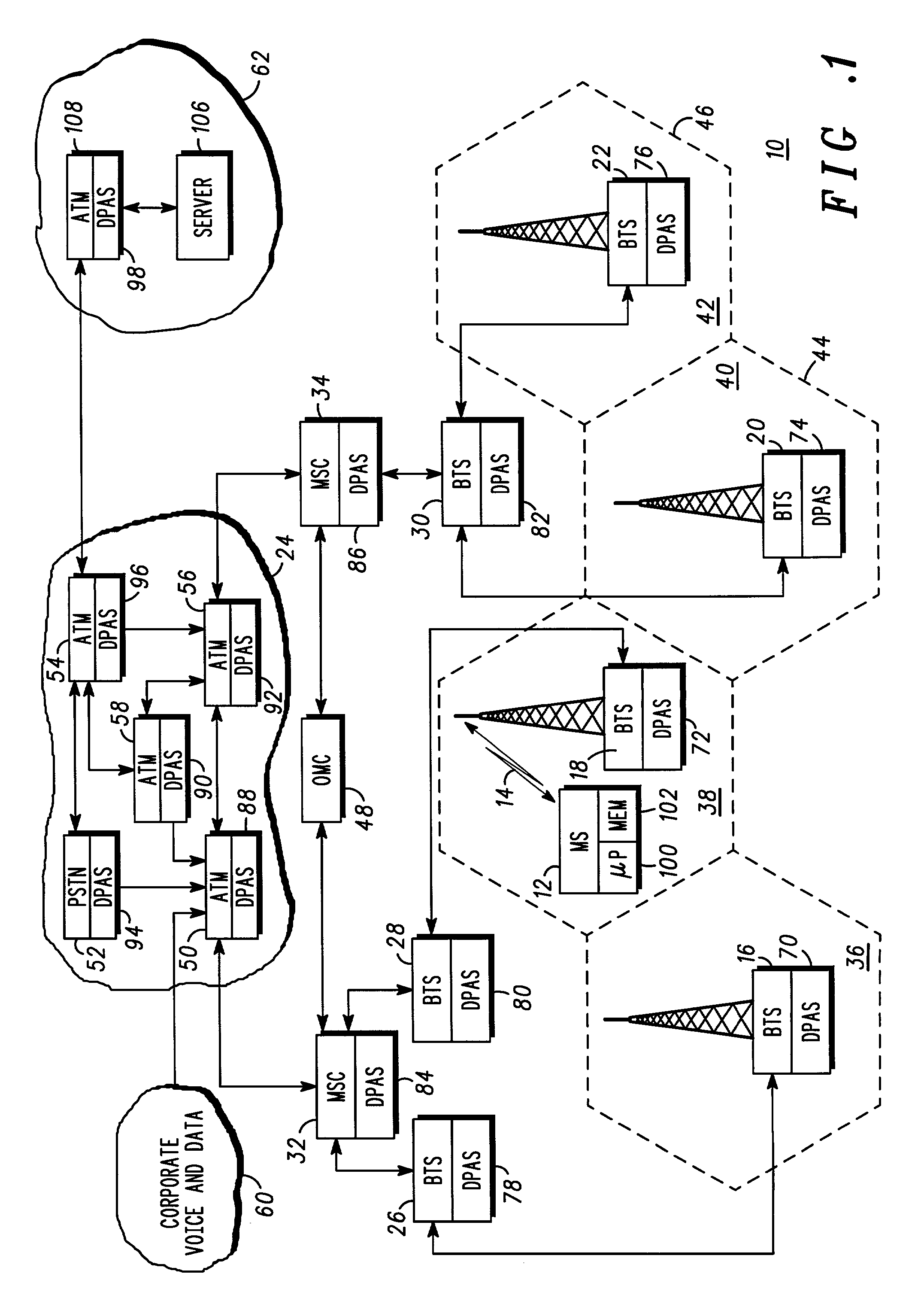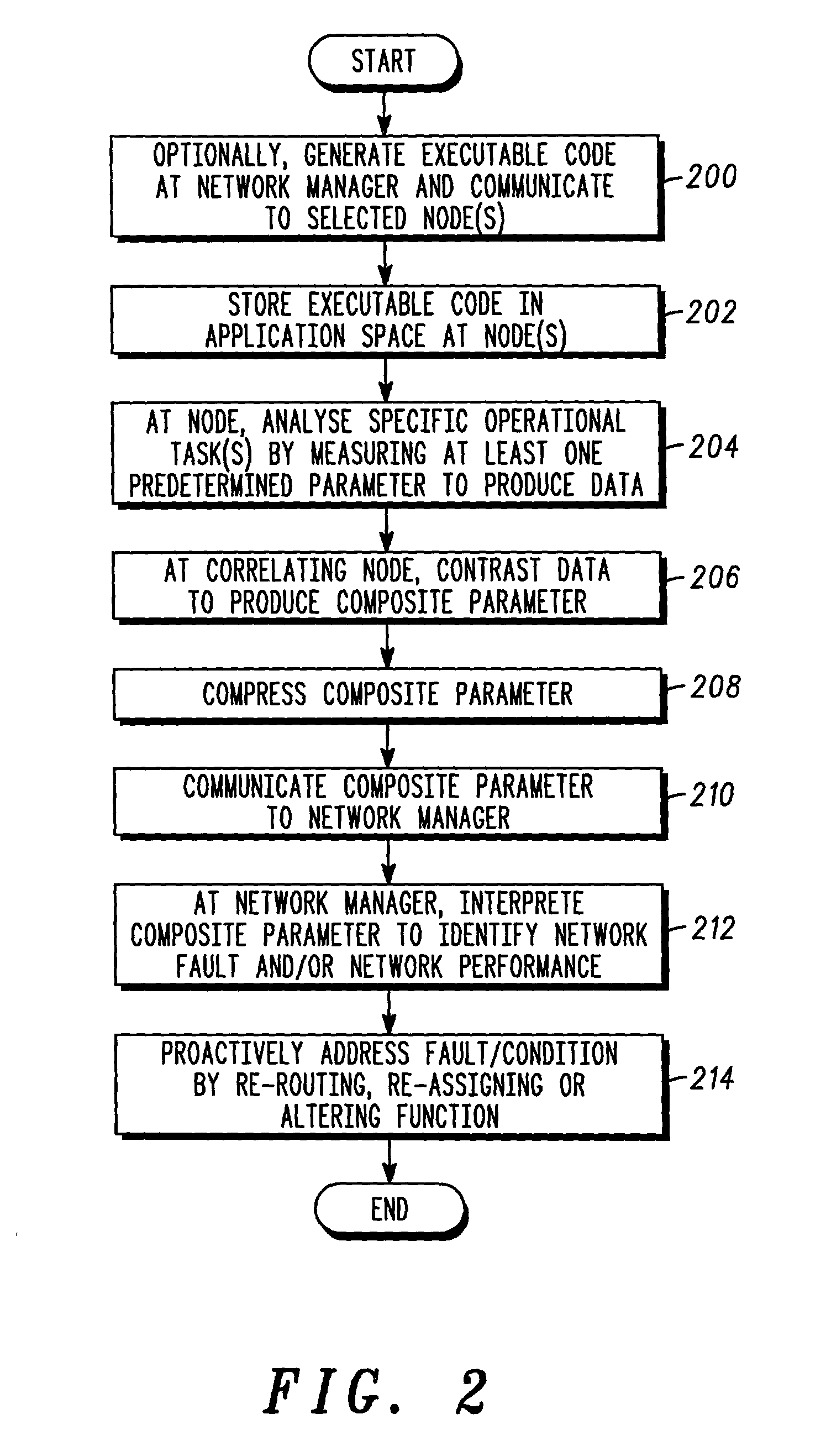Network management system and method of management control in a communication system
- Summary
- Abstract
- Description
- Claims
- Application Information
AI Technical Summary
Benefits of technology
Problems solved by technology
Method used
Image
Examples
Embodiment Construction
[0036] FIG. 1 shows, in outline, a telecommunication system 10. A mobile station (MS) 12 (of which there are many within each cell of the system) communicates over an air interface 14 with at least one base transceiver station (BTS) 16-22 support a coverage area. Each BTS 16-22 is connected to a telephone network 24 via a base station controller (BSC) 26-30 and a mobile switching centre (MSC) 32-34. BTS are therefore interconnected through MSCs. Each BSC 26-30 is therefore responsible for providing service to at least one cell 36-42 through control of one or more BTSs 16-22, with each cell containing one or more BTSs. The system may support and overlay-underlay environment of cells, as is well known, with a plurality of micro-cells 44-46 controlled by a single BSC. Each MSC may also be connected to an operations and maintenance centre (OMC) 48. The OMC may contain a central time reference, with which clocks in the various other nodes of the network may be synchronised.
[0037] In comb...
PUM
 Login to View More
Login to View More Abstract
Description
Claims
Application Information
 Login to View More
Login to View More - R&D
- Intellectual Property
- Life Sciences
- Materials
- Tech Scout
- Unparalleled Data Quality
- Higher Quality Content
- 60% Fewer Hallucinations
Browse by: Latest US Patents, China's latest patents, Technical Efficacy Thesaurus, Application Domain, Technology Topic, Popular Technical Reports.
© 2025 PatSnap. All rights reserved.Legal|Privacy policy|Modern Slavery Act Transparency Statement|Sitemap|About US| Contact US: help@patsnap.com



